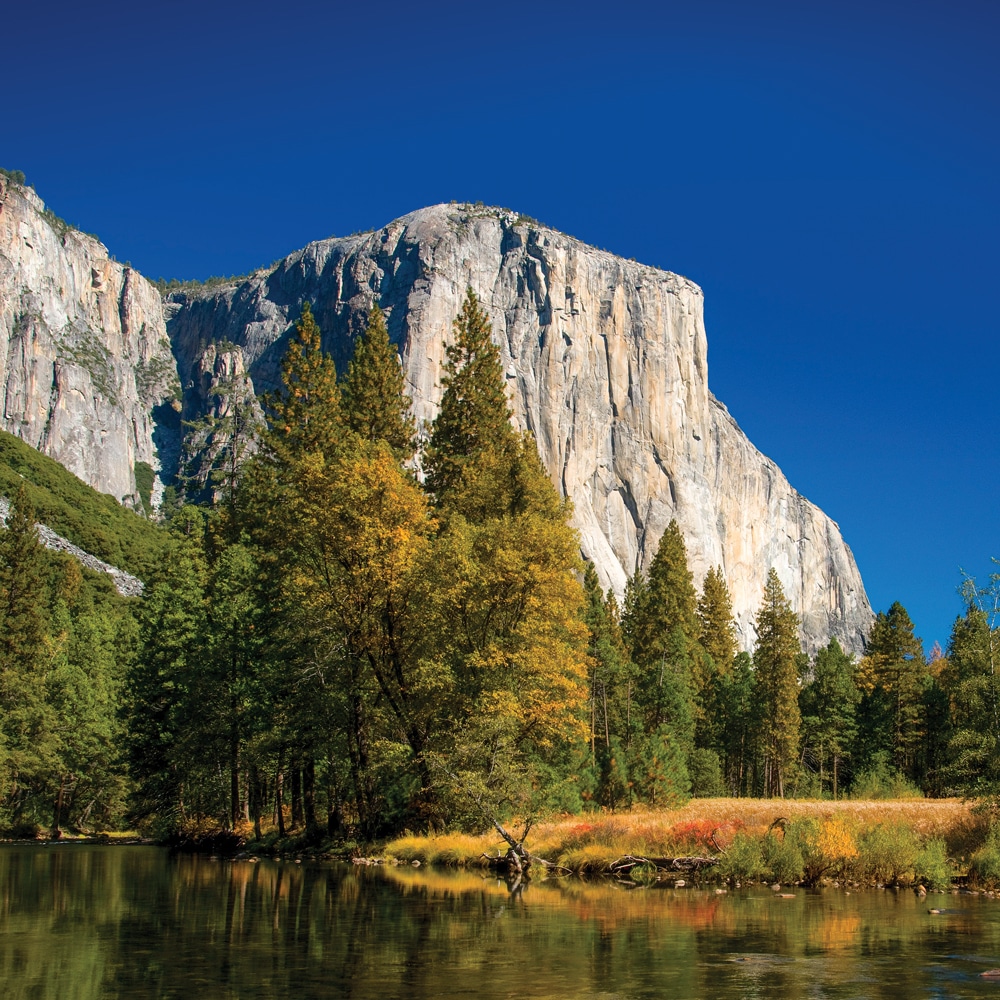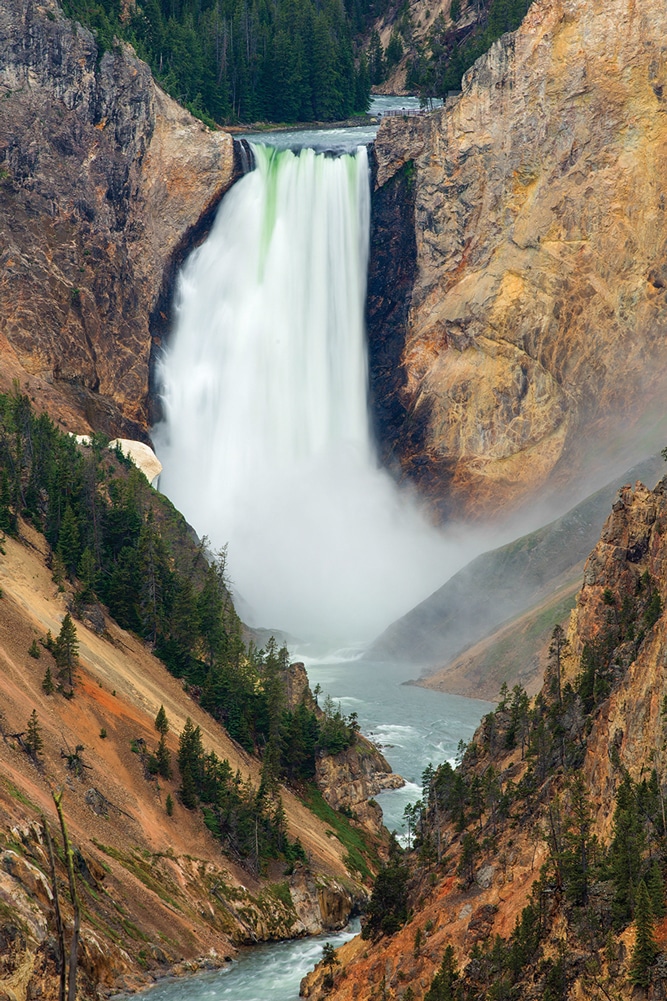One visitor’s thank-you
August 25, 2016, marked the 100th anniversary of the National Park Service (NPS). The familiar arrowhead emblem of the NPS has guided us to many of our greatest adventures and celebrated views, and has helped to bring our nation’s story to life.
The NPS centennial is a milestone not only for the Park Service but also for parks and park users. The anniversary  signals a good time to take stock of how far the national park system has come, and to ponder what’s next. This is also the perfect time to salute the rangers who have helped make our park experiences so memorable.
signals a good time to take stock of how far the national park system has come, and to ponder what’s next. This is also the perfect time to salute the rangers who have helped make our park experiences so memorable.
In the Beginning
The unmatched magnificence of the steaming landscapes of Yellowstone, the grand domes of Yosemite and the fable-worthy giant trees of Sequoia captured the nation’s imagination and heart. Although few held firsthand witness, nature writings of the day and the romantic art of Thomas Moran and others brought these treasures to public awareness. Grandeur on such scale deserved unprecedented recognition, and so became the birth of the national park.
In 1872, Yellowstone became the world’s first such park. In 1890, Sequoia and Yosemite joined it at the zenith, followed by Mount Rainier, Crater Lake, Wind Cave, Mesa Verde and Glacier. In 1912, the impressive portfolio prompted British diplomat James Bryce to declare national parks “the best idea America ever had,” a sentiment that prevails today.
While designating the parks came naturally, determining their management and funding did not. The parks, variously stashed in departments of Agriculture, Interior and War, suffered an absence of oversight. Poaching, illegal logging and grazing, vandalism, abuse and exploitation threatened the very values Americans sought to protect. The civilian superintendents were simply outmatched.
The situation’s urgency merited sending in the military. Soldiers served as the first park rangers, and the famed Buffalo Soldiers (African-American troops) played a key role throughout the West. Still, without funds and enforcement authority, the enlisted had to rely on ingenuity, guile and persuasion to bring order and protection to the parks.
The military confiscated guns within park boundaries and deterred grazing by expelling animals and herders out opposite corners of the park. Besides policing, they fought fires, cleared trails, opened roads and built rapport with park users.
At the Fort Yellowstone Historic District in Yellowstone National Park, exhibits honor the military that served at the park for more than 30 years. At Yosemite, interpretation pays homage to the Buffalo Soldiers’ unsung service.
Enter the National Park Service
Early on, John Muir and others voiced a need for better care of, and a single oversight authority for, the national parks. A newly won Muir disciple, Stephen Mather emerged as the right man at the right time. A man of means and persuasion with the ear of leaders, Mather catapulted national parks into the modern era and served as the first director of the National Park Service.

The trail around Lake Josephine in Glacier National Park affords hikers breathtaking views of the surrounding scenery.
His meteoric appearance on the scene traces to an impromptu letter of disconcert dashed out after his 1914 trip to Yosemite and Sequoia. Writing his former classmate, Secretary of the Interior Franklin Lane, Mather cited his concerns about park conditions. A terse reply followed, to the effect, “If you don’t like it, do it yourself.”
So, Mather did. Arriving in Washington, he advocated for a single oversight body, which would become the National Park Service in 1916, and he defined and guided its mission. Beyond accepting the challenge, Mather put his money where his mouth was, paying staffers, sponsoring trips and buying land, grove and road, donating all to the nation. He helped form the nonprofit National Parks Association, which could bolster parks away from federal influence.
He was a dynamic, face-in-the-field leader. His right-hand assistant and successor at the National Park Service, Horace Albright, was the steadying, nuts-and-bolts force, navigating the pitfalls of Washington. Together, they left an indelible imprint on the park landscape. At many sites, visitors will see commemorative plaques dedicated to Mather.

Gettysburg National Military Park in Adams County, Pennsylvania, commemorates the Civil War’s bloodiest battle as well as President Lincoln’s famous Gettysburg Address.
Mather walked the delicate line between preservation and recreational use, isolation and public access, and faced the sharpened arrows from both sides of the arguments. He insisted parks be egalitarian, open to all the citizens, and free from the stain of politics.
When rolling through the parks in our motorhomes or setting up camp beneath the trees, we owe a debt of gratitude to Mather, who championed opening the parks to motorists and making stays comfortable and welcoming. Mather firmly believed that an intimacy with parks translated to advocacy and support.
Mather expanded the National Park System to the populated East, and Albright united the national monuments, battlefields and historic sites under the Park Service umbrella.
From wardrobe to purpose, Mather prescribed the park ranger. A heroic figure, the uniformed ranger was to be knowledgeable, talented, skilled, dedicated, able to ride and care for horses, build trails, fight fires, handle weapons, endure weather and put in long hours. Because funds seldom follow high ideals, this superhero also worked for little pay.
Although most rangers were men, some women served in the all-purpose role. Today, of the 22,000 permanent, temporary and seasonal park employees, 3,861 park rangers answer to Mather’s ideal.
Celebrate 100
In the footsteps of Mather, the NPS, together with the nonprofit National Park Foundation, has launched the “Find Your Park” centennial campaign to renew park awareness and call attention to the continuing need for park care and protection. The goal is twofold: to engage new interest and to strengthen personal bonds with the nation’s parks.
Brother, Can You Spare a Dime?
According to the National Parks Conservation Association, the annual budget for the NPS constitutes less than one-fifteenth of 1 percent of the federal budget; American households pay on average just $2.56 each year in taxes for our national parks, about the cost of a small cup of coffee.
The campaign pushed off the starting blocks in 2015 and will sprint through the end of 2016. Entry to all parks is free on August 25, 2016. Concerts, cultural festivals, re-enactments, special tours and talks, and birthday cake are some of the planned celebrations, varying by park and by date. At the interactive website, www
.findyourpark.com, a calendar will aid in finding centennial events, and followers can share park experiences. Park-specific pages may suggest additional things to do (www.nps.gov/findapark/index.htm).
On other fronts, the NPS has linked arms with the National Endowment for the Arts, which turns 50 in 2015, to sponsor “Imagine Your Parks,” national-park-inspired art. The art will later appear at parks and elsewhere. Then, on January 1, 2016, look for the NPS to be represented at the Tournament of Roses Parade in Pasadena, California, with its parallel theme, “Find Your Adventure.”
Because many individual park units achieve noteworthy birthdays during the 2015-2016 centennial celebration period, keep the party hat handy!
Celebrants this year include Yosemite and Sequoia-Kings Canyon, each marking 125 years. Centurions include Colorado’s Rocky Mountain National Park and Dinosaur National Monument, while Florida’s Canaveral National Seashore turns 40. A whole pocketful of parks is commemorating 50 years, including Nez Perce National Historical Park (Idaho, Montana, Oregon and Washington) and Iowa’s Herbert Hoover National Historic Site, as well as Utah’s Golden Spike National Historic Site. Another turning 50 is Delaware Water Gap National Recreation Area at the Pennsylvania-New Jersey border. And that’s just the first lap.
Rounding into 2016, California’s Mount Lassen Volcanic and Hawaii Volcanoes national parks reach the century mark. Maine’s Acadia celebrates 100 years of protection, and Mammoth Cave (Kentucky), Guadalupe Mountains (Texas) and Klondike Gold Rush (Alaska and Washington) are among the dozens celebrating landmark anniversaries on their ways to 100 years.
A Source of Pride
Oh what a playground, oh what a masterpiece, oh what a gripping story! More than 400 national park units now grace the land. The National Park Service’s charge extends to more than 84 million acres and includes 30 national scenic and national historic trails and 60 wild and scenic rivers, as well as cultural and historic features.
The true challenge to Find Your Park comes in narrowing the field.
Whether stricken silent while standing at the rim of the Grand Canyon or tearing up while gazing upon Antietam’s Bloody Lane or the monument to the 1st Minnesota Volunteer Infantry at Gettysburg; whether welling with pride at hearing the fife and drum at Minuteman or when repeating aloud the timeless words of Washington, Jefferson, Lincoln and Roosevelt at Mount Rushmore; or whether shivering in expectation as the new-day sun first kisses U.S. soil at Acadia or as a grizzly pokes through the foliage in a meadow basin below the Highline Trail at Glacier, there is a park moment – likely many moments – that will linger with you forever.
And, until you find your park – find your park moment – it’s nice to know the NPS is on the job, keeping it safe, keeping it open until you get there. Here’s to the next 100 years and all the possibilities.
It Takes a Village
 Although the uniformed ranger is the face of the NPS, a talented group of individuals must come together to keep our parks safe, clean, healthy, preserved, interpreted, accessible and in good repair for the next generation. Biologists, botanists, geologists and hydrologists bring the best science to protecting our natural resources, while archaeologists, historians and archivists look after our cultural resources. Park police ensure the peace, protect park facilities and resources and assist visitors in need. Mechanics, engineers, masons, carpenters, landscapers and a host of unheralded maintenance workers keep the parks open and welcoming as Mather intended.
Although the uniformed ranger is the face of the NPS, a talented group of individuals must come together to keep our parks safe, clean, healthy, preserved, interpreted, accessible and in good repair for the next generation. Biologists, botanists, geologists and hydrologists bring the best science to protecting our natural resources, while archaeologists, historians and archivists look after our cultural resources. Park police ensure the peace, protect park facilities and resources and assist visitors in need. Mechanics, engineers, masons, carpenters, landscapers and a host of unheralded maintenance workers keep the parks open and welcoming as Mather intended.
If You Blinked
The NPS inventory of treasured places continues to evolve and grow.
Added December 19, 2014
– Blackstone River Valley National Historical Park, Massachusetts and Rhode Island
– Tule Springs Fossil Beds National Monument, Nevada
– Valles Caldera National Preserve, New Mexico
– World War I Memorial, District of Columbia
Added February 19, 2015
– Pullman National Monument, Illinois
Added February 24, 2015
– Honouliuli National Monument, Hawaii
The Arrowhead Emblem
 The familiar, endearing arrowhead emblem of the National Park Service dates back to 1951. It is based on a sketch by Park Service historian Aubrey Neasham. The depicted Sequoia tree, bison, peak and water together with the arrowhead background symbolize the natural, wildlife, scenic, recreational and cultural resources under the protective watch of the NPS. In 1966, a modern redesign of triangles and cannonballs failed to win hearts and slipped from use.
The familiar, endearing arrowhead emblem of the National Park Service dates back to 1951. It is based on a sketch by Park Service historian Aubrey Neasham. The depicted Sequoia tree, bison, peak and water together with the arrowhead background symbolize the natural, wildlife, scenic, recreational and cultural resources under the protective watch of the NPS. In 1966, a modern redesign of triangles and cannonballs failed to win hearts and slipped from use.






